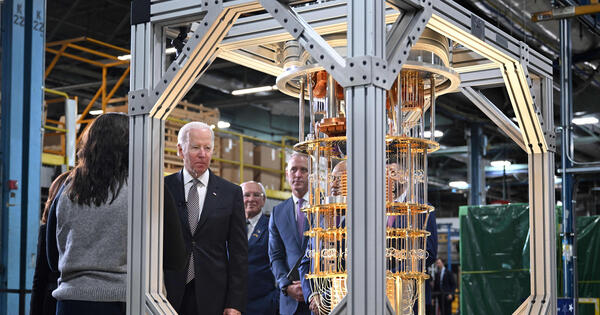
Economic inequality continues to widen—and not just between people, but between places, too. The United States, for example, has seen a regional divergence since the 1970s, when the country began transitioning away from heavy manufacturing and toward a service-based economy, resulting in dampened economic prospects and living standards throughout the Rust Belt.
The widening chasm between richer and poorer regions has motivated policymakers in multiple countries to offer incentives, like tax breaks, to attract corporate investment to economically disadvantaged areas. Most recently, the U.S. federal government unveiled the Regional Technology and Innovation Hubs Program, which is part of the 2022 U.S CHIPS and Science Act and is designed to help local governments create regional high-tech hubs outside of major cities that are focused on producing technologies like semi-conductors.
In a new paper, Yale SOM’s Cameron LaPoint and Shogo Sakabe of LMU Munich set out to assess the efficacy of these increasingly popular place-based policies by investigating the long-term impacts of such a model introduced in 1980s Japan, called Technopolis.
Drawing from corporate balance sheets as well as a registry of companies’ manufacturing plant locations and asset types, LaPoint’s and Sakabe’s analysis revealed that the Technopolis policy yielded mixed results. While the government’s incentives did clearly have a multiplier effect on companies’ bottom lines, scaling about $1.5 billion in total government subsidies to an overall gain of about $56.7 billion over 12 years (with much of that surplus value funneled into hiring), most of the new hires came from Japan’s major cities, not from the more peripheral regions the policy sought to buoy.
“I think this offers some important lessons for CHIPS, to the extent that a lot of the local development boards involved with these tech hubs are also trying to court large companies,” LaPoint says. “There’s high-risk, high-reward here. The risk is that larger companies have the ability to hire from all parts of the country, and there’s a concern that this can contribute to ‘brain drain’—that you might invest all this money to build tech hubs around universities and local research institutions, but then the people who start at the tech hubs might go elsewhere within the larger companies.”
When the Japanese government launched Technopolis in 1984, it was presented as a means of energizing regions of the country set apart from the major metro areas of Tokyo, Osaka, and Nagoya. The government also sought, following the oil shocks of the 1970s, to move Japan’s economy away from heavy industry and toward high-tech industries. To do so, the government offered high-tech manufacturing firms immediate tax write-offs in the form of bonus depreciation if they established themselves within sites that satisfied three criteria: they were already developed manufacturing hubs; they were situated in the vicinity of a major research university with an engineering department; and they were in a region with a population of roughly 200,000 to 300,000 people.
Similarly, LaPoint points out, to access grant funding through CHIPS, a site needs to demonstrate that it is a hub of high-tech manufacturing, and all the designated tech hubs under CHIPS so far have been within range of a research university.
To measure the long-term impacts of the Technopolis policy on firm growth and hiring practices, the researchers parsed data about publicly listed firms’ financials as well as their various plant locations over time. They determined that while the economic pie undoubtedly grew as a result of Technopolis, its hiring benefits disproportionately flowed to big cities.
“Our results cast doubt on the ability of place-based incentives extended to large multi-plant firms to stimulate peripheral labor markets,” the researchers write, adding: “Our key takeaway is that local capital subsidies may fail to mitigate regional inequality but can result in net gains for the aggregate economy.”
Why did job creation fueled by Technopolis favor big cities? LaPoint says the researchers can’t be certain, though they were able to rule out the possibility that the bulk of hiring under Technopolis was for white-collar roles in executive and administrative areas; it turned out that almost all the new hires recorded were, in fact, in manufacturing.
Given that finding, LaPoint’s hunch is that it was just easier for the firms receiving Technopolis subsidies to find skilled high-tech manufacturing workers in nearby major cities, which have larger labor pools, than in the areas immediately surrounding their plants. In fact, he and Sakabe found that some local governments contributed to the Technopolis project by expanding transportation infrastructure like road networks and regional light rail systems, making it easier for plants to attract workers from cities.
LaPoint notes that the presence of trustworthy transportation infrastructure is important for other reasons, too: firm managers must be able to travel easily between sites—and so, too, must vehicles for delivering and transporting goods of all kinds.
He says this is an especially important takeaway for policymakers in the U.S. to pay attention to, given the lack of efficient transportation networks in many parts of the country.
“I think one of the main lessons of Technopolis is recognizing that there is this tradeoff—which I think is inherent in CHIPS as well—between addressing regional inequality and acknowledging firms’ need for productivity,” LaPoint says. “Dealing with that means having to solve the infrastructure issue.”
“The Yale School of Management is the graduate business school of Yale University, a private research university in New Haven, Connecticut.”
Please visit the firm link to site




